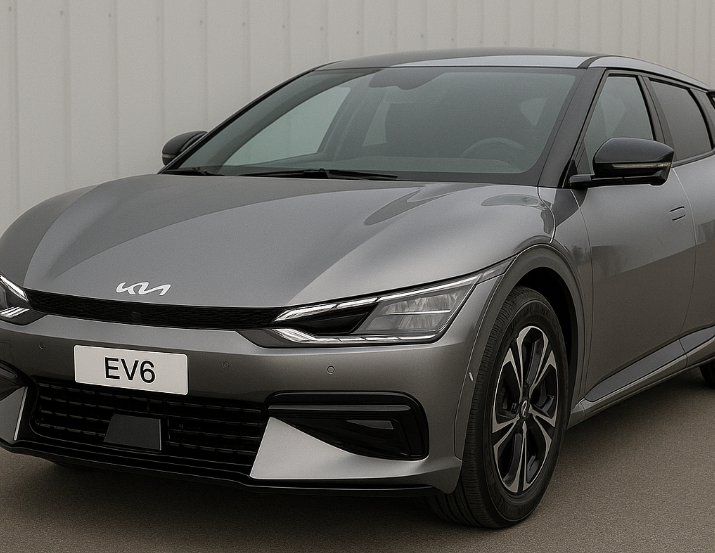
Kia EV6, VW ID.4, Tesla Model Y, and Polestar 2.
What to check on ANY older EV
- Battery health (SOH): Ask for a state-of-health report or charging logs. Most degrade slowly (≈1.5–2% per year), but lots of DC fast charging or extreme heat/cold can accelerate it. Look for ≥85–90% SOH on a 3–4 year old car.
- High-voltage battery warranty left:
- Kia EV6: 7 yrs / 150,000 km
- VW ID.4: 8 yrs / 160,000 km (≥70% capacity)
- Tesla Model Y: 8 yrs / 160–192k km (trim dependent), 70% capacity
- Polestar 2: 8 yrs / 160,000 km
- WLTP vs reality: In Nordic winters expect 15–30% less than WLTP. A 500 km WLTP car = ~350–420 km at −5 °C with heating.
- Charging test: Always try a 20→80% DC fast charge to confirm the car reaches expected peak speeds.
- Software updates: Check it’s on the latest major version—many fixes for charging, HVAC, and infotainment are software-driven.
- Recalls/TSBs: Run VIN through brand’s recall check and ensure work is complete (Tesla’s heat-pump recall, VW’s software campaigns, etc.).
Model-specific watch-outs
Kia EV6
- Strengths: Super-fast 800 V charging (~18 min 10→80%), good efficiency, V2L (3.6 kW).
- Common issues:
- Charge-port door not closing/locking properly.
- Occasional 12 V battery issues if car sat unused.
- ICCU challenges (Integrated Charging Control Unit)
- Tip: Verify software is current and test the charge-port several times.
VW ID.4
- Strengths: Spacious, comfortable, solid WLTP range.
- Common issues:
- Early cars had slow, buggy infotainment—only solved after software 3.x. Make sure it’s on 3.2–3.5.
- Charging curve is weaker on old firmware (peaks 125 kW vs 175 kW with updates).
- 12V issues
- Tip: Cheap early cars often haven’t had updates—budget time/cost for that.
Tesla Model Y
- Strengths: Huge cargo space (rear + frunk), efficient, Supercharger network access, OTA updates.
- Common issues:
- Heat-pump / cabin heating faults in 2021–22 cars (check recall).
- Panel alignment and trim rattles vary by build year.
- Phantom braking
- Tip: Check HVAC thoroughly in cold weather, and inspect body alignment closely.
Polestar 2
- Strengths: Solid build, improving software, Polestar Approved used cars can come with a battery health certificate.
- Common issues:
- Early heat-pump logic was poor—test pre-heating and DC charging.
- OTA updates are key; without them you may see range/charging inefficiency.
- Drive Shafts
- Rear camera
- Tip: Ask for an official SOH certificate or third-party battery test.
WLTP & pricing reality
- WLTP is a ceiling. Plan on ~70–80% of WLTP in Swedish winters.
- Depreciation trends:
- Tesla Model Y: values swing with new-car price cuts.
- Polestar 2: older (2020–22) cars depreciated faster → good bargains if updated.
- VW ID.4: early software cars are cheaper but can be frustrating before updates.
- Kia EV6: holds value better thanks to charging speed and long Kia warranty.
10-minute used-car test script
- Ask seller: Battery SOH, software version, recall history.
- Cold start: HVAC on—check cabin heat starts within 2–3 min (important on Model Y & Polestar 2).
- Charge port: Open/close multiple times, plug in AC. (EV6’s door actuator is a known weak spot.)
- Infotainment: Navigate menus quickly, test ADAS features (ID.4 must be 3.x).
- Fast-charge test: Arrive ~25–30% SOC at a ≥150 kW charger and log speeds. (EV6: ~200–250 kW, Model Y: ~250 kW, ID.4: ~140–170 kW, Polestar 2: ~150–200 kW).
- Noise: Drive 90–110 km/h, listen for wind/trim noise.
- Papers: Confirm battery/drive-unit warranty end date & mileage.